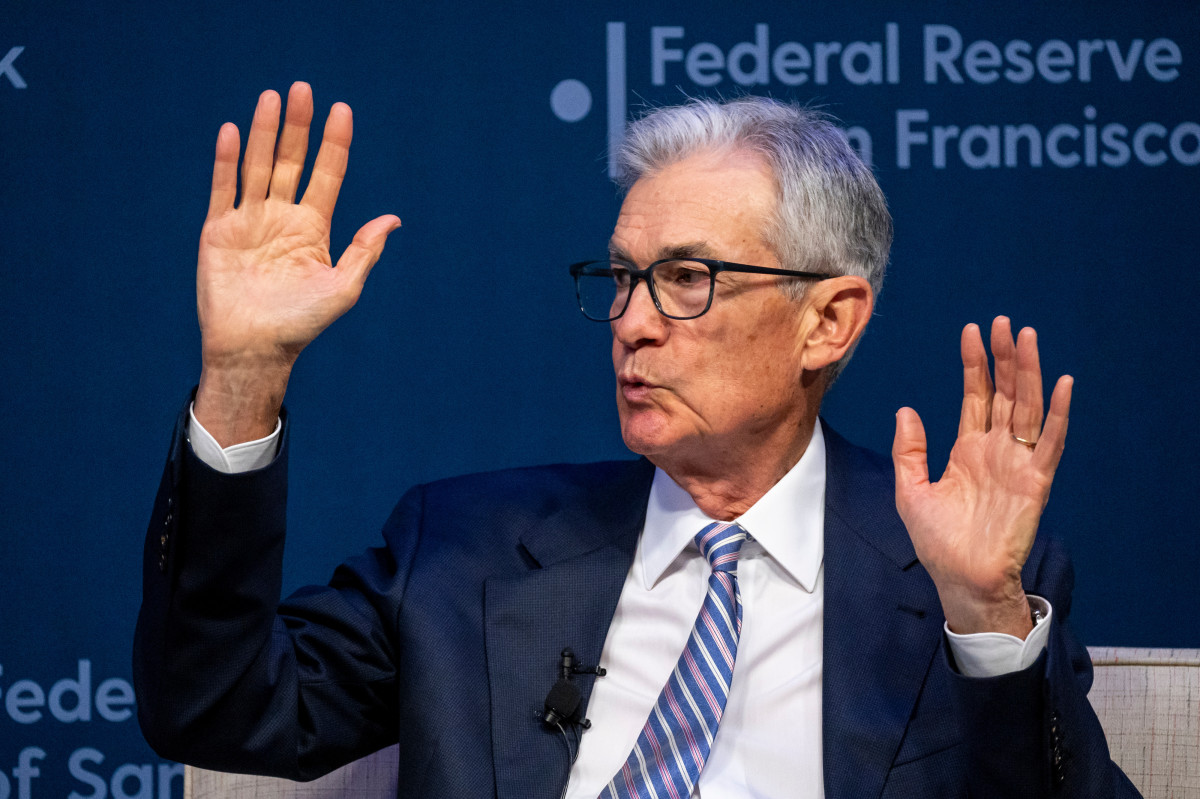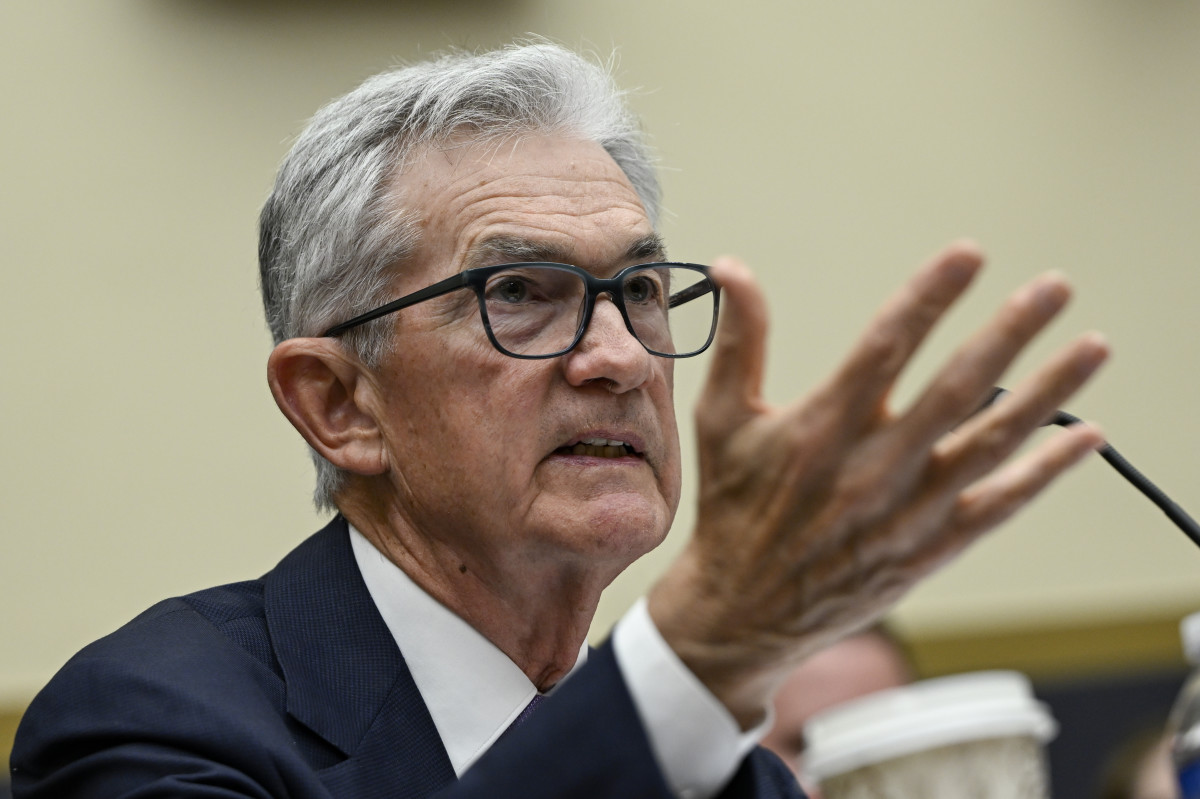
The bond market has been roiling since the Federal Reserve's outsized interest-rate cut last month. Benchmark yields have surged on hot inflation data and retreating on data suggesting a softening jobs market.
The moves suggest investors are growing increasingly uncertain with their Fed rate forecasts, and with bets on more easing over the final three months of the year, as the economy continues to outperform and stocks test fresh record highs.
💰Free Newsletter From TheStreet - TheStreet 💰
Bond-market volatility could also blunt stock performance, as a yield surge could entice investors to retreat from riskier markets in favor of more stable returns, while a sharp pullback in yields could suggest underlying weakness in the late-cycle domestic economy.
"The problem with Goldilocks 'just right' conditions is that the market becomes reactive to data in either direction," said Lauren Goodwin, economist and chief market strategist at New York Life Investments.

More bond market swings expected
"We see volatility around growth, inflation and interest-rate expectations as highly likely to continue," she added. "And, pointedly, we expect the Fed cannot cut as fast or as far as the market expected just a few weeks ago."
Related: Retail sales report tests Fed interest rate cut bets
CME Group's FedWatch tool, a real-time tracker of Fed rate forecasts, pegs the odds of a 0.25-percentage-point cut in November at around 92.8%. Bets on a half-point cut, which were holding at 50% following the Fed's last meeting in September, have virtually disappeared.
That's largely because markets have seen a host of recent data releases, as well as corporate earnings projections, that suggest the economy will continue to defy recession forecasts well into the new year.
The Atlanta Fed's GDPNow forecasting tool pegs the third-quarter growth rate at 3.2%, firmly ahead of the economy's longer-term trend of between 2% and 2.5%.
Employers added 254,000 new jobs last month, a figure that shocked Wall Street forecasters, while the headline unemployment rate eased to 4.1%.
Hot inflation surprise
Inflation also surprised to the upside, with the headline September tally of 2.4% and the core reading (stripping out food and energy costs) ticking up to 3.3%, well north of the Fed's 2% target.
Alongside the economic figures, investors are looking at a corporate earnings landscape that suggests third-quarter profits rose around 4.5% from a year earlier and will accelerate by around 12.2% over the year's final three months.
The S&P 500 has produced 45 separate record highs so far this year, the Nasdaq is within a whisker of its all-time peak, and the Dow Jones Industrial Average topped the 43,000-point mark for the first time early this week.
Those are hardly the conditions that would provide the Fed with enough evidence to justify deep near-term interest-rate cuts, which likely explains the shift in messaging to signal a "gradual" approach to policy easing over the coming months.
Related: Goldman Sachs analyst overhauls S&P 500 targets for 2024 and 2025
BlackRock's global chief investment strategist, Wei Li, says she doesn't see the Fed cutting rates as sharply as markets suggest.
"An aging workforce, persistent budget deficits and the impact of structural shifts like geopolitical fragmentation should keep inflation and policy rates higher over the medium term," she said in a recent weekly update.
Bond markets, however, are caught between pricing for a dovish Fed, which pushes yields lower, while making allowances for resurgent inflation pressures and the impact of potentially expansive tax-and-spending policies from Vice President Kamala Harris and former President Donald Trump.
"However, if this is an election and transition that sees significant tensions and a sense of unease among households and businesses that leads to weaker growth and rising unemployment, the pressure on the Fed to act more aggressively will be intense," said James Knightley, chief international economist at ING.
Bond-market volatility on the MOVE
The Merrill Lynch Option Volatility Estimate index, better known as MOVE and a benchmark for bond-market volatility, hit the highest levels of the year Wednesday and is up nearly 40% since the Fed's September rate decision.
Benchmark 10-year Treasury note yields, which bottomed out at 3.61% just prior to the Fed's half-point rate cut, climbed as high as 4.09% last week before pulling back to the 4% mark in early Wednesday trading.
"Markets are pricing in sharp Fed rate cuts and term premium is close to zero," said Li of BlackRock. "We think yields will keep swinging in both directions on incoming data."
Related: PCE Inflation report resets bets on another big Fed rate cut
The MOVE index surge also suggests bigger swings are likely on the way.
Hurricane Milton, which pounded the west coast of Florida just weeks after the flooding deluge of Hurricane Helene, is likely to take at least 50,000 jobs from the October payroll report, according to Samuel Tombs of Pantheon Macroeconomics. The ongoing strike at Boeing potentially could clip a similar amount from the Labor Department's overall tally.
"As things stand, we look for no change in nonfarm payrolls [for the month of October], well below the average increase of the previous six months of 194,000 and below our estimate of the current trend of 100,000," he said. "A negative print, therefore, would not be a surprise."
More Economic Analysis:
- Goldman Sachs analyst overhauls S&P 500 targets for 2024, 2025
- PCE Inflation report resets bets on another big Fed rate cut
- Why stocks are soaring and the rally has room to run
Such a print, of course, would stoke another round of bond-market volatility and seep into equity-market performance, as investors scramble to determine whether a weak October labor reading would change the trajectory of Fed rate forecasts and signal a downward shift in broader economic prospects.
"The Fed views recessions through the lens of labor-market weakness," said David Waddell, CEO and chief investment strategist at Waddell & Associates in Memphis.
"Therefore, the pivot towards recession watch equates to a pivot towards labor-market watch, making the weekly unemployment claims and monthly labor reports the most important data releases for the markets now."
Related: Veteran fund manager sees world of pain coming for stocks







